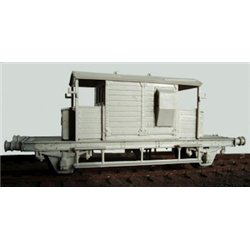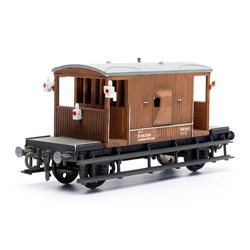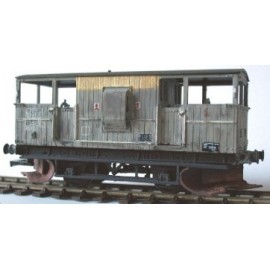Sandite is a solution made up from antifreeze, sand and steel-shot (tiny round steel grains). It is used on the UK...
No products
Product successfully added to your shopping cart
There are 0 items in your cart. There is 1 item in your cart.
Search Tips
How has the role of the brake van evolved throughout the history of the railways?
Brake vans, also known as guard's vans or caboose cars, have played a vital role in the history of railways. These specialized vehicles were used to ensure safety and control during train operations. In this article, we will explore the evolution of brake vans and their significance in different eras of railway history.
During the early years of the railways, brake vans were an essential part of train formations. They were typically located at the rear of a train and provided a safe space for the guard or conductor to observe the train and communicate with the locomotive crew. The guard's primary responsibility was to apply the brakes when necessary, hence the name "brake van."
In the steam era, brake vans were often built with wooden bodies and had a distinctive look. They featured a raised lookout platform at one or both ends, allowing the guard to have a clear view of the train. These vans were equipped with handbrakes, which the guard operated manually to control the train's speed and ensure safe braking.
As railways advanced and technology improved, the role of brake vans evolved. In the diesel and electric era, the need for guards to manually operate brakes diminished with the introduction of automatic braking systems. This led to the gradual phasing out of traditional brake vans, as their primary function became redundant.
However, brake vans still found their place in certain types of trains, such as freight trains carrying hazardous materials. These vans were modified to include additional safety features like reinforced walls and specialized equipment to handle dangerous goods. They served as a buffer between the locomotive and the hazardous cargo, providing an extra layer of protection.
In recent years, the use of brake vans has further diminished with the implementation of advanced technology and improved safety systems. Most modern trains are equipped with sophisticated braking systems, which are controlled by the locomotive crew. The need for a dedicated brake van has become almost obsolete in many railway operations.
Despite their declining use, brake vans hold a significant place in the history of the railways. They represent an era when manual intervention was crucial for safe train operations. Today, they are often preserved as historical artefacts or used in heritage railways to recreate the atmosphere of a bygone era.
In conclusion, brake vans have played a crucial role in different eras of railway history. From their early days as essential components of train formations to their gradual phasing out in modern railway operations, these specialized vehicles have witnessed significant changes. Understanding the evolution of brake vans provides us with insights into the advancements in railway technology and the importance of safety in train operations.
Click here to receive the tips weekly in your mailbox. You can unsubscribe at any time.


-43898-p.jpg)







